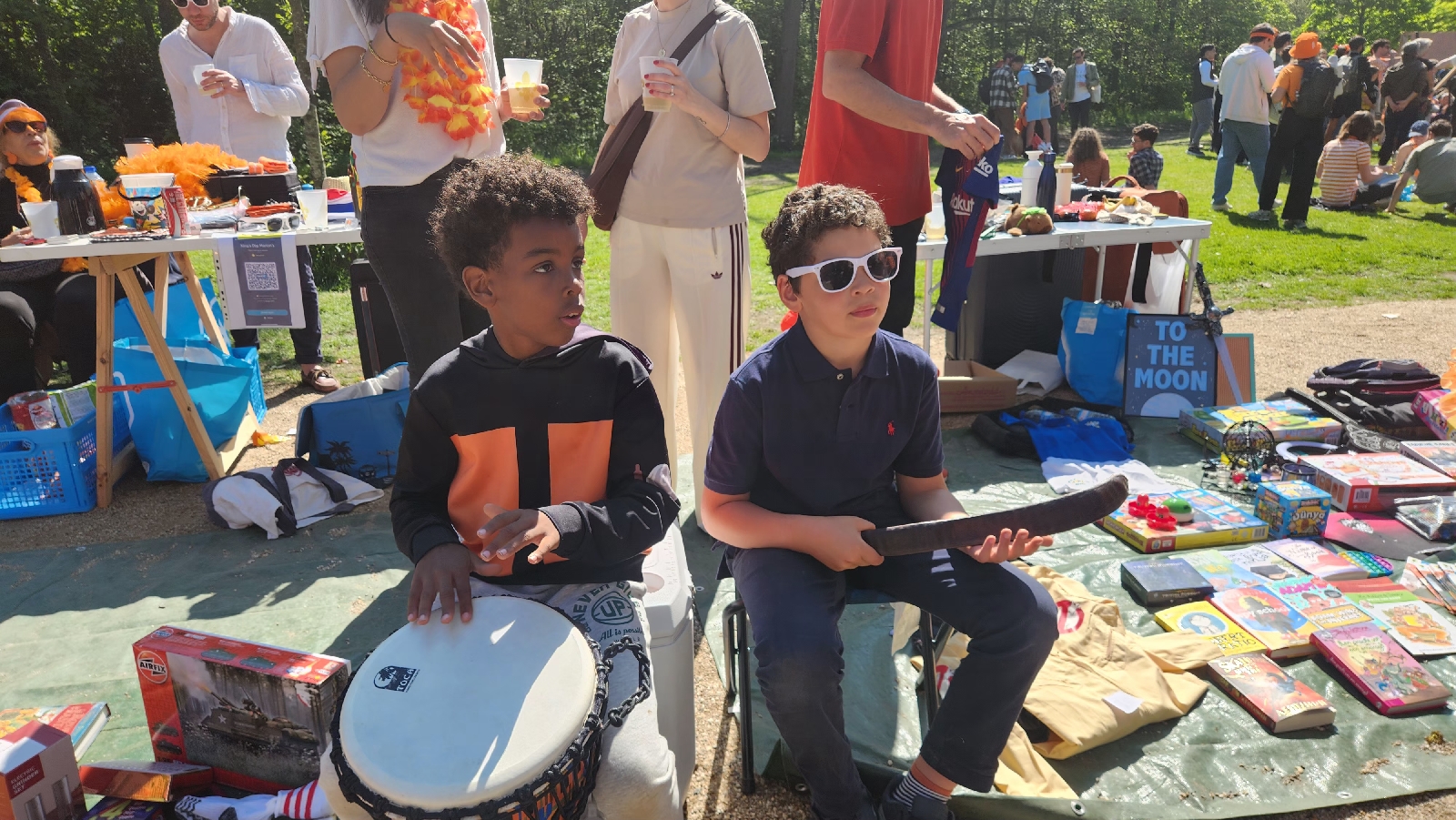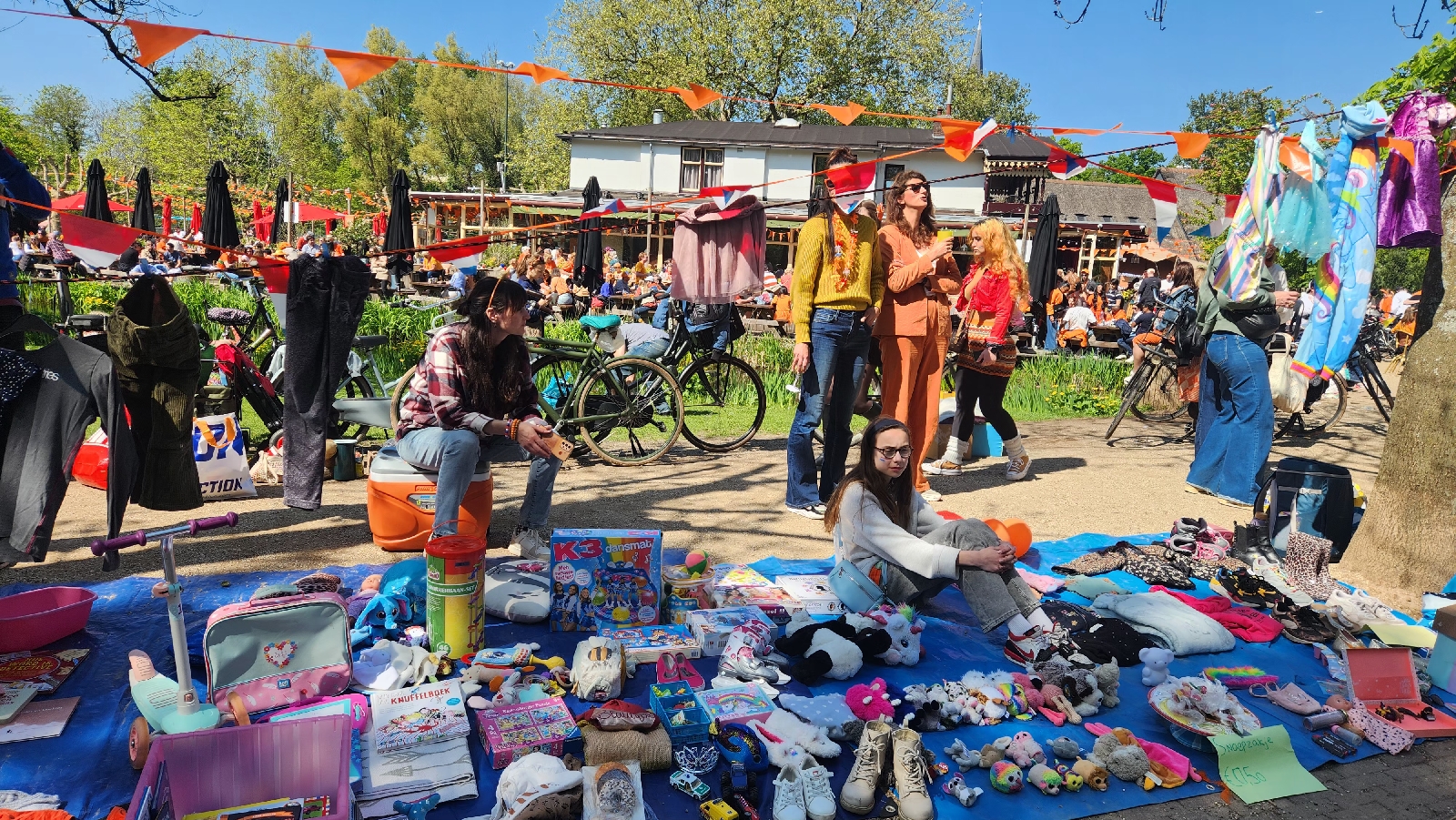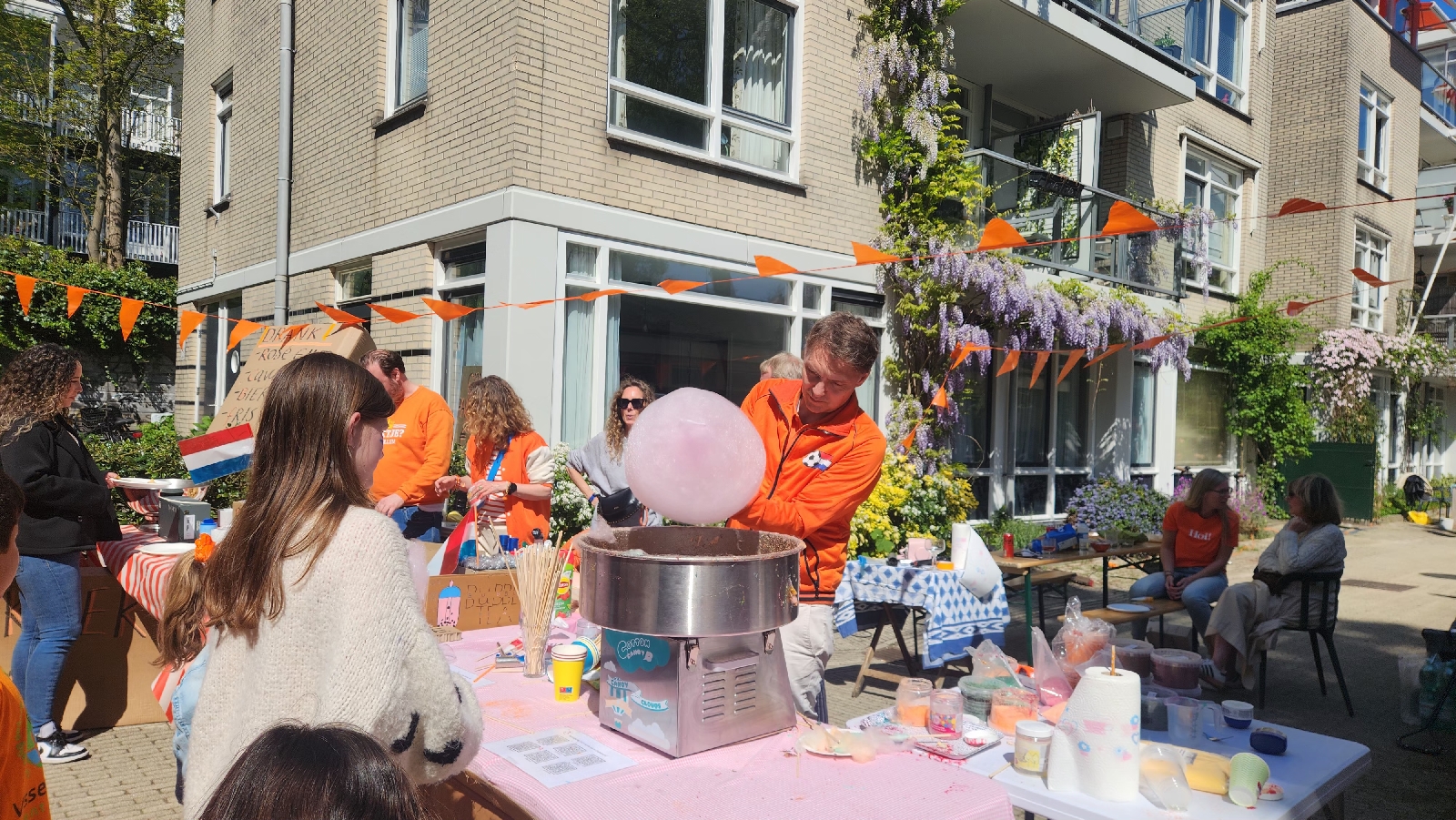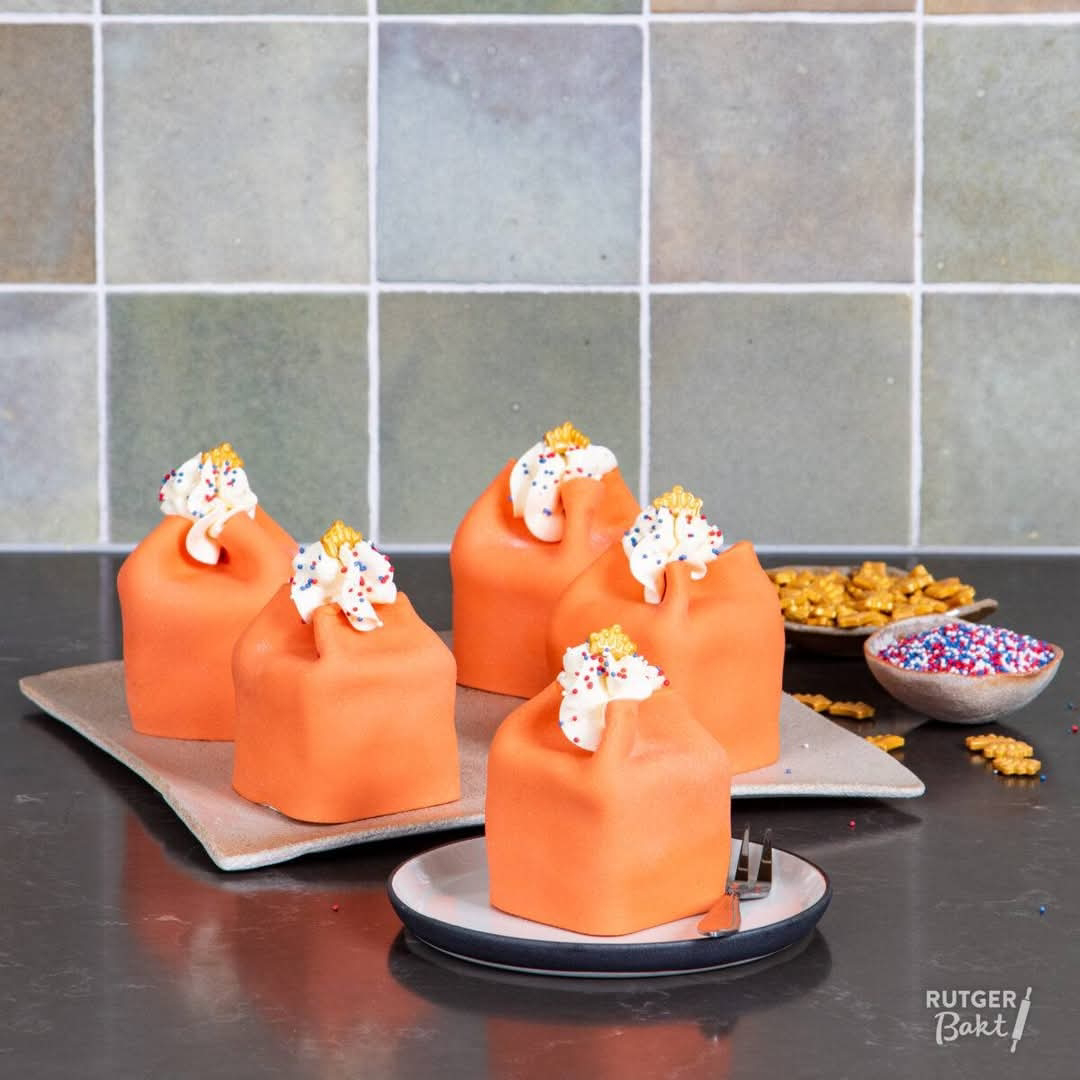घुमक्कड़ की डायरी-12. King's Day-2025. एम्सटर्डम और Almere(Netherlands)में एक रंगीन यात्रा वृतांत.
"किंग्स डे 2025: एम्स्टर्डम और अल्मेरे में एक रंगीन यात्रा वृत्तांत"
26 अप्रैल, 2025 को मुझे नीदरलैंड्स के राष्ट्रीय अवकाश, किंग्स डे, के उत्सव में शामिल होने का अविस्मरणीय अवसर प्राप्त हुआ। यह उत्सव मैंने नीदरलैंड्स के दो जीवंत शहरों—एम्स्टर्डम और अल्मेरे—में मनाया। केसरिया रंग की लहर, सांस्कृतिक प्रदर्शन, और अनोखा मुक्त बाजार इस उत्सव को भारत की होली की तरह रंगीन और उत्साहपूर्ण बनाते हैं। मेरे इस लेख अविस्मरणीय अनुभव का विस्तृत वर्णन है, साथ ही किंग्स डे के इतिहास और केसरिया पोशाक के महत्व की जानकारी भी दी गई है।
किंग्स डे, जिसे डच में कोनिंग्सडैग कहा जाता है, हर साल 27 अप्रैल को (या यदि 27 तारीख रविवार को हो तो 26 अप्रैल को) नीदरलैंड्स के वर्तमान राजा, किंग विलेम-एलेक्जेंडर के जन्मदिन के सम्मान में मनाया जाता है। इस परंपरा की शुरुआत 1885 में प्रिंसेस डे के रूप में हुई, जब प्रिंसेस विल्हेल्मिना का पांचवां जन्मदिन मनाया गया था। 1890 में विल्हेल्मिना के रानी बनने पर यह क्वीन्स डे (कोनिंगिनेडैग) बन गया। बाद में, रानी जुलियाना और बीट्रिक्स के शासनकाल में यह उत्सव उनकी जन्मतिथियों के अनुसार मनाया जाता रहा। 2013 में किंग विलेम-एलेक्जेंडर के सिंहासन पर बैठने के बाद इसे किंग्स डे नाम दिया गया और उनकी जन्मतिथि, 27 अप्रैल, के अनुसार मनाया जाने लगा।
यह दिन डच गौरव, एकता, और सामुदायिक भावना का उत्सव है। इसकी एक खास विशेषता है व्रिजमार्कट (मुक्त बाजार), जहां नागरिक बिना परमिट या कर के सामान बेच सकते हैं। यह परंपरा सामुदायिक सहभागिता और उद्यमशीलता को बढ़ावा देने की भावना से शुरू हुई थी। केसरिया रंग, जो किंग्स डे का पर्याय है, डच शाही परिवार, हाउस ऑफ ऑरेंज-नासाउ, के प्रति राष्ट्रीय गौरव का प्रतीक है। इस दिन लोग केसरिया कपड़े, टोपी, विग, और अन्य सामान पहनकर उत्सव में शामिल होते हैं, जो एकता और उत्साह का प्रतीक है। इस अवसर पर मेरे सहयात्रियों पत्नि कृष्णा कांता और सुपुत्र उत्कर्ष तो केसरी रंग के शर्ट पहन कर निकले परंतु मैंने मार्केट से एक स्वेटर खरीदा और पहना और हम सब इस रंग में शामिल हो गए.
किंग्स डे की रौनक पिछले दिन की शाम से ही शुरू हो गई थी, जब नीदरलैंड्स की सड़कें उत्साह से भर उठी थीं। 26 अप्रैल की सुबह, मैं और मेरे साथी अल्मेरे से ट्रेन लेकर एम्स्टर्डम पहुंचे, उत्सव के केंद्र में शामिल होने के लिए उत्साहित। जैसे ही ट्रेन एम्स्टर्डम सेंट्रल स्टेशन पर रुकी, हम एक विद्युतीय माहौल में प्रवेश कर गए। स्टेशन से बाहर निकलते ही जो नजारा दिखा, वह अविस्मरणीय था—केसरिया रंग में रंगे हजारों लोग, संगीत, और हंसी-मजाक से भरा वातावरण। यूरोप के कोने-कोने से और दुनिया भर से पर्यटक इस उत्सव में शामिल होने आए थे, जिसने एम्स्टर्डम को एक वैश्विक मेला बना दिया था।
सड़कें केसरिया सजावट से सुशोभित थीं—बैनर, गुब्बारे, और झंडे—जबकि स्थानीय लोग और पर्यटक केसरिया कपड़ों, विचित्र टोपियों, और फेदर बोआ जैसे सामानों में सजे थे। यह दृश्य भारत की होली की याद दिलाता था, जहां रंग लोग को एकजुट करते हैं, लेकिन यहां केसरिया रंग डच पहचान का प्रतीक बनकर उभरा।
हमारा पहला पड़ाव था वोंडेलपार्क, एम्स्टर्डम का प्रसिद्ध शहरी पार्क, जो किंग्स डे के दौरान उत्सव का मुख्य केंद्र बन जाता है। पार्क में प्रवेश करते ही हम हजारों लोगों की भीड़ में घिर गए—परिवार, दोस्त, और पर्यटक—सभी उत्सवी माहौल में डूबे हुए। पार्क एक विशाल मुक्त बाजार और सांस्कृतिक उत्सव का मिश्रण बन चुका था।
वोंडेलपार्क का व्रिजमार्कट इस दिन की सबसे बड़ी खासियत थी। यह सामान्य बाजारों से अलग था, क्योंकि यह कर-मुक्त और परमिट-मुक्त था, जहां कोई भी विक्रेता बन सकता था। बच्चे, बड़े, और बुजुर्ग अपने घरों से लाए सामान—घर में बने केक, नींबू पानी, पुराने खिलौने, कपड़े, और छोटी-मोटी चीजें—चटाई, टेबल, या ठेलों पर बेच रहे थे। यह रचनात्मकता और उद्यमशीलता का उत्साह संक्रामक था। बच्चे अपनी चीजों को गर्व से प्रदर्शित कर रहे थे और ग्राहकों के साथ मजेदार ढंग से मोलभाव कर रहे थे। बच्चों का एक समूह कैमरा लेकर लोगों से तीन यूरो में चित्र खिंचवाने का आग्रह करवा रहा था और उन्होंने भुगतान के बाद हमारी भी एक फोटो ली.
मुझे विशेष रूप से कुछ बच्चों का स्टॉल पसंद आया, जहां उन्होंने हाथ से पेंट किए गए पत्थर और अपनी मां के साथ बनाए गए कुकीज़ बेच रहे थे। उनकी उत्साहपूर्ण मुस्कान इस दिन की सामुदायिक भावना को दर्शाती थी, जहां मुनाफे से ज्यादा सहभागिता पर जोर था। डिजिटल भुगतान की अनुपस्थिति ने इस बाजार को और भी पुरातन आकर्षण दिया; हर लेन-देन नकद में हो रहा था, जो इस दिन की कर-मुक्त परंपरा को रेखांकित करता था।
बाजार की हलचल के बीच, वोंडेलपार्क एक सांस्कृतिक मंच भी था, जहां खास तौर पर युवा कलाकार अपनी प्रतिभा दिखा रहे थे। बच्चे वायलिन, गिटार, और यहां तक कि अकॉर्डियन जैसे वाद्य यंत्र बजा रहे थे, जबकि अन्य नृत्य कर रहे थे या छोटे नाटक प्रस्तुत कर रहे थे। सड़क पर संगीतकार, जादूगर, और बाजीगर भीड़ को आकर्षित कर रहे थे। प्रतिभाओं की विविधता प्रभावशाली थी, जो नीदरलैंड्स की समृद्ध सांस्कृतिक विरासत और किंग्स डे की समावेशी भावना को दर्शाती थी।
हम रुककर कुछ युवा लड़कियों का पारंपरिक डच लोक नृत्य देखने लगे, जिनके केसरिया रिबन हवा में लहरा रहे थे। भीड़ तालियां बजा रही थी, और उस पल में ऐसा लगा जैसे हम सभी एक बड़े, आनंदमय परिवार का हिस्सा हैं। संगीत, हंसी, और खाने की खुशबू—स्ट्रूपवाफल्स, पॉफर्जेस, और ताज़ा ग्रिल्ड सॉसेज—ने एक मादक अनुभव पैदा किया।
वोंडेलपार्क में घंटों बिताने के बाद, हम एम्स्टर्डम के प्रसिद्ध नहर क्षेत्र में पहुंचे। नहरें देखने लायक थीं, जिनमें केसरिया सजावट वाली नावें थीं, जिन पर लोग संगीत की धुन पर नाच रहे थे। पुल और सड़कें लोगों से भरे हुए थे, जिनमें से कई केसरिया विग या ताज पहने हुए थे, जिससे एक स्वप्निल, नाटकीय माहौल बन रहा था।
हमने शहर के और हिस्सों को देखने के लिए ट्राम लिया, यह देखकर आश्चर्य हुआ कि इतनी भीड़ के बावजूद एम्स्टर्डम का सार्वजनिक परिवहन कितनी कुशलता से काम कर रहा था। हर कोने पर एक छोटा-सा उत्सव चल रहा था—सड़क पर बैंड बजा रहे थे, पॉप-अप बार केसरिया थीम वाले कॉकटेल परोस रहे थे, और विक्रेता केसरिया गुब्बारे से लेकर ग्लो स्टिक तक बेच रहे थे। ऊर्जा अथक थी, फिर भीएक उमंग थी. घर लौटने से पहले, हमने अल्मेरे में एक संक्षिप्त पड़ाव लिया, जो अपने जीवंत किंग्स डे उत्सव के लिए जाना जाता है। एम्स्टर्डम की तुलना में यहां का उत्सव छोटा था, लेकिन उतना ही उत्साहपूर्ण। शहर का केंद्र केसरिया रंग में रंगे स्थानीय लोगों से भरा था, जो लाइव संगीत, खाने के स्टॉल, और एक छोटे व्रिजमार्कट का आनंद ले रहे थे। यहां का माहौल अधिक आत्मीय था, परिवार पार्कों और चौराहों पर एकत्रित थे। हमने जल्दी से डच फ्राइज़ आलू के साथ खाए और इस शांत लेकिन उत्सवी माहौल को आत्मसात किया।
एक यादगार दिन की यादें
जैसे-जैसे दोपहर शाम में बदली, हमने घर वापसी शुरू की, मेट्रो से ट्रेन स्टेशन और फिर ट्रेन से अल्मेरे पहुंचे। किंग्स डे में बिताए गए पांच घंटे कैसे बीत गए, पता ही नहीं चला, जिसने हमें उत्साहित लेकिन थका हुआ छोड़ दिया। वापसी की यात्रा शांत थी, मेरी पत्नि अपने दिन की कहानियां साझा कर रहे थी —व्रिजमार्कट में मिले सौदों, अचानक शुरू हुए नृत्य समारोहों, और अजनबियों के साथ जुड़ाव के पलों की बातें।
दिन के बारे में सोचते हुए, मैं होली से इसकी समानता देखे बिना नहीं रह सका। दोनों त्योहार रंग, समुदाय, और आनंद का विस्फोट हैं, जहां सामाजिक बाधाएं खत्म हो जाती हैं, और लोग जीवन का उत्सव मनाने के लिए एकजुट होते हैं। किंग्स डे, अपने केसरिया उत्साह, मुक्त बाजारों, और सांस्कृतिक प्रदर्शनों के साथ, एकता और उत्सव की यही भावना दर्शाता है। बच्चों को अपनी रचनाएं बेचते, कलाकारों को अपनी प्रतिभा साझा करते, और अजनबियों को नीदरलैंड्स के प्रति साझा प्रेम में एकजुट होते देख मेरे दिल पर एक अमिट छाप छोड़ी।
किंग्स डे 2025 रंग, संस्कृति, और समुदाय का एक तूफान था, जिसने नीदरलैंड्स को उसके सबसे जीवंत रूप में प्रदर्शित किया। वोंडेलपार्क के हलचल भरे व्रिजमार्कट से लेकर एम्स्टर्डम की जीवंत नहरों और अल्मेरे के आकर्षक उत्सवों तक, यह दिन डच एकता और उत्सव की भावना का प्रमाण था। केसरिया पोशाक, जो हाउस ऑफ ऑरेंज की विरासत में निहित है, ने सभी को राष्ट्रीय गौरव के साझा प्रदर्शन में एकजुट किया। घर लौटते समय, मैं न केवल एक शानदार दिन की यादें साथ लाया, बल्कि नीदरलैंड्स की परंपराओं और गर्मजोशी की गहरी सराहना भी। किंग्स डे, होली की तरह, यह याद दिलाता है कि आनंद सार्वभौमिक है, और एक रंग—चाहे वह केसरिया हो या इंद्रधनुष—पूरी दुनिया को एकजुट कर सकता है।
Ram Mohan Rai ,
Amsterdam/Almere,
Netherlands.
26.04.2025
King's Day 2025: A Vibrant Journey Through Amsterdam and Almere
On April 26, 2025, I had the incredible opportunity to immerse myself alongwith my wife Krishana Kanta and son Utkarsh Rai in the vibrant celebrations of King's Day, the national holiday of the Netherlands, in two of its lively cities—Amsterdam and Almere. This festive occasion, marked by a sea of orange, cultural performances, and a unique free market, felt like a Dutch version of Holi, bursting with color, community spirit, and joy. Below is a detailed account of my unforgettable experience, along with insights into the history of King's Day and the significance of the iconic orange attire.
The History of King's Day
King's Day, known as *Koningsdag* in Dutch, is celebrated annually on April 27 (or April 26 if the 27th falls on a Sunday) to honor the birthday of King Willem-Alexander, the reigning monarch of the Netherlands. The tradition began as *Princess's Day* in 1885 to celebrate Princess Wilhelmina’s fifth birthday. When Wilhelmina became queen in 1890, it evolved into *Queen's Day* (Koninginnedag). The holiday continued under subsequent queens, Juliana and Beatrix, with dates shifting to align with their birthdays. When King Willem-Alexander ascended the throne in 2013, the celebration was renamed King's Day and set to his birthday, April 27.
The day is a celebration of Dutch pride, unity, and community spirit. One of its unique features is the *vrijmarkt* (free market), where citizens can sell goods without permits or taxes, a tradition rooted in fostering community engagement and entrepreneurship. The orange color, synonymous with King's Day, reflects the national pride associated with the House of Orange-Nassau, the Dutch royal family. Wearing orange—often in the form of quirky hats, wigs, and clothing—has become a symbol of unity and festivity, with locals and tourists alike donning the vibrant hue to join the revelry.
The Journey Begins: Arriving in Amsterdam
The excitement of King's Day began the previous evening, as the streets of the Netherlands buzzed with anticipation. On the morning of April 26, my companions and I boarded a train from Almere to Amsterdam, eager to experience the heart of the celebrations. As the train pulled into Amsterdam Centraal Station, we were greeted by an electrifying atmosphere. Stepping outside, we were met with a spectacle that took our breath away—a kaleidoscope of orange-clad revelers, music, and laughter filled the air. Tourists from across Europe and beyond had flocked to the city, transforming Amsterdam into a global carnival.
The streets were adorned with orange decorations—banners, balloons, and flags—while locals and visitors alike sported orange clothing, from head-to-toe outfits to whimsical accessories like feather boas and face paint. The sight was reminiscent of India’s Holi, where colors unite people in celebration, but here, orange reigned supreme as a symbol of Dutch identity.
## Exploring Vondelpark: The Heart of the Festivities
Our first stop was Vondelpark, Amsterdam’s iconic urban park, which becomes a focal point of King's Day celebrations. As we entered, we were enveloped by a sea of thousands of people—families, friends, and tourists—all reveling in the festive spirit. The park was alive with activity, resembling a massive open-air market and cultural festival rolled into one.
The Vrijmarkt: A Unique Marketplace
The *vrijmarkt* was the highlight of Vondelpark. Unlike typical markets, this tax-free, permit-free bazaar allowed anyone to become a vendor for the day. Children, adults, and even seniors set up makeshift stalls on blankets, tables, or carts, selling everything from homemade baked goods and lemonade to second-hand toys, clothes, and trinkets. The creativity and entrepreneurial spirit were infectious—kids proudly showcased their wares, haggling with customers in a playful yet determined manner.
I was particularly charmed by a group of children selling hand-painted rocks and cookies they had baked with their parents. Their enthusiasm was a testament to the community-driven ethos of King's Day, where the focus is on participation rather than profit. The absence of digital payments added to the nostalgic charm; every transaction was in cash, reinforcing the day’s tax-free tradition.
Cultural Performances: A Showcase of Talent
Amid the bustling market, Vondelpark was a stage for cultural performances, with a special emphasis on young artists. Children played musical instruments—violins, guitars, and even accordions—while others danced or performed skits. Street musicians, jugglers, and magicians added to the festive ambiance, their performances drawing crowds of appreciative onlookers. The diversity of talent was remarkable, reflecting the Netherlands’ rich cultural tapestry and the inclusive spirit of King's Day.
We paused to watch a group of young girls perform a traditional Dutch folk dance, their orange ribbons twirling in the breeze. The crowd clapped along, and for a moment, it felt like we were all part of one big, joyous family. The blend of music, laughter, and the aroma of street food—stroopwafels, poffertjes, and freshly grilled sausages—created an intoxicating sensory experience.
Navigating the City: Canals, Trams, and Crowds
After spending hours in Vondelpark, we ventured into Amsterdam’s iconic canal district. The canals were a sight to behold, lined with boats decorated in orange and packed with partygoers dancing to music blasting from onboard speakers. The bridges and streets were thronged with people, many wearing orange wigs or crowns, creating a surreal, almost theatrical atmosphere.
We hopped on a tram to explore more of the city, marveling at how seamlessly Amsterdam’s public transport handled the massive crowds. Every corner seemed to host a mini-festival—street bands played, pop-up bars served orange-themed cocktails, and vendors sold everything from orange balloons to glow sticks. The energy was relentless, yet there was a sense of camaraderie that made the chaos feel welcoming.
A Quick Visit to Almere
Before returning home, we made a brief stop in Almere, a modern city known for its vibrant King's Day celebrations. While smaller in scale than Amsterdam, Almere’s festivities were equally spirited. The city center was filled with orange-clad locals enjoying live music, food stalls, and a smaller *vrijmarkt*. The community vibe here was more intimate, with families gathering in parks and squares to celebrate. We grabbed a quick bite—delicious Dutch fries with mayonnaise—and soaked in the relaxed yet festive atmosphere.
The Journey Home: Reflections on a Memorable Day
As the afternoon turned to evening, we began our journey back home, taking a metro to the train station and then a train to Almere. The five hours we spent immersed in King's Day had flown by, leaving us exhilarated yet exhausted. The return journey was quieter, with fellow passengers sharing stories of their day—tales of bargains found at the vrijmarkt, impromptu dance parties, and moments of connection with strangers.
Reflecting on the day, I couldn’t help but draw parallels with Holi in India. Both festivals are explosions of color, community, and joy, where social barriers dissolve, and people come together to celebrate life. King's Day, with its orange fervor, free-spirited markets, and cultural performances, captured the same essence of unity and festivity. The sight of children selling their creations, artists sharing their talents, and strangers bonding over a shared love for the Netherlands left an indelible mark on my heart.
King's Day 2025 was a whirlwind of color, culture, and community that showcased the Netherlands at its vibrant best. From the bustling *vrijmarkt* of Vondelpark to the lively canals of Amsterdam and the charming festivities in Almere, the day was a testament to the Dutch spirit of togetherness and celebration. The orange attire, rooted in the legacy of the House of Orange, unified everyone in a shared expression of national pride. As I returned home, I carried with me not just memories of a spectacular day but a deeper appreciation for the traditions and warmth of the Netherlands. King’s Day, much like Holi, is a reminder that joy is universal, and a single color—be it orange or a rainbow—can bring the world together.
Ram Mohan Rai,
Amsterdam/Almere.
Netherlands.
26.04.2025




























Comments
Post a Comment